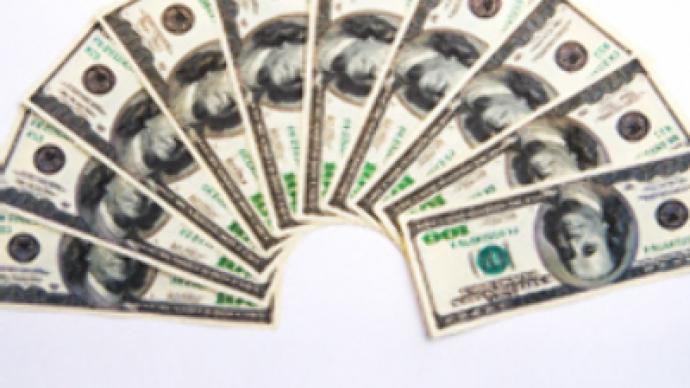Strong dollar, weak dollar

I got a question from a reader after my last article, suggesting the US was pursuing a strong dollar policy to refinance its economy, at huge risk to the rest of the world.
Last weekend the Group of Seven industrial powers warned the volatile Japanese yen was a threat to market stability. They made no reference to the US dollar, whose rampant advance is wreaking havoc on developed and emerging markets alike.
In the modern world, the US buys more than it makes. The Japanese and Chinese sell goods; oil-exporters sell energy; they get paid in dollars. The US would soon run out of purchasing power except that those dollars get lent back to the US.
Japan, China and Russia hold the world's largest foreign exchange reserves, largely in dollars. They use them to buy US Treasury bills. This supports the dollar and keeps US interest rates low, which allows Americans buy even more goods.
Economists have long warned that if the exporters lost their appetite for US dollars, rates would rise, the housing bubble would burst and the exporters would shift their assets into other currencies. Combined with the flow of production abroad, this would represent a shift in global economic power eastwards.
What happened is that higher interest rates did indeed prick the US housing bubble, but the damage was self-inflicted. People took loans they could not afford once short term teaser rates were replaced by higher standard variable rates.
The impact was worse because US investment banks had built a speculative pyramid on these products. As the leverage went into reverse US banks could not afford to lend except at penal rates, thus withdrawing ever more credit from the market.
The Asian lenders have not been sitting on the sidelines. For most of this decade the US let the dollar slide. Investors in the dollar had to buy even more dollars just to protect the value of their holdings. It's been argued that without ever greater purchases by the Asians, the dollar would nosedive.
By 2003, Japan had had enough. The Japanese government began to move away from large-scale purchase of U.S. securities, though its private sector took over.
The Chinese government continued to lend to the United States. In return, China made only modest steps to boost the undervalued Renminbi. Keeping it low helped Chinese exports which, in turn, gave China money to invest in US Treasuries.
Even the dollar's accelerated decline from 2002 was insufficient to bring its exports and purchases back into balance. The current account deficit continued to worsen. Now, in 2008, the dollar has taken off again against a broad basket of currencies.
Foreign central banks will struggle to keep their currencies broadly in line with the dollar. Those who try will crush their domestic economies. Not good news for other countries but could it work for the US?
In response to the immediate banking and insurance crisis, the US desperately needs the dollar to be strong: so that investors remain happy to hold dollars; so that US interest rates remain low; and so that funds are repatriated into dollars.
However US exports will suffer from the rising dollar. US foreign exchange policy will switch from persuading countries to revalue their currencies down, to revaluing them higher. In the past this has been the standard prescription of the International Monetary Fund, with disastrous results for emerging markets.
The US deficit will balloon as the dollar rises. If the US government actually paid the bill for this borrowing, which might happen if interest rates were to rise, US living standards would take a hit.
For now, refinancing the US economy is the priority. On the other hand, policy could ultimately switch to devaluation, through the mechanism of inflation.
As the cost of the banking and insurance bailout dwarfs original estimates, the US Federal Reserve and the US Treasury are already at the point of unleashing new unsterilized dollar issuance. The inflation this may unleash is the topic for another article.
U.S. pulls the plug on the world












